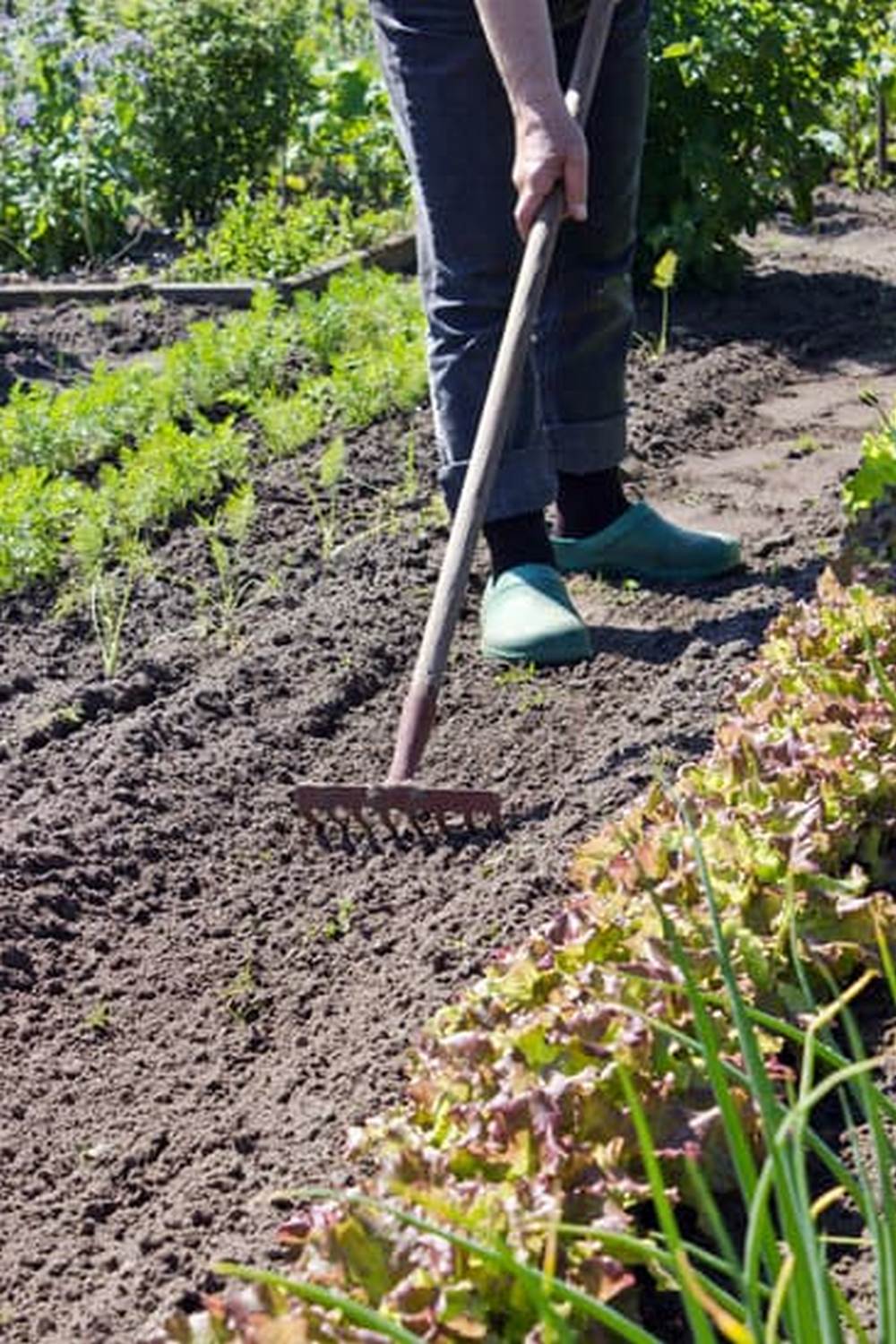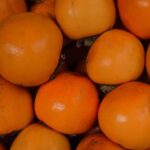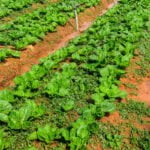Vegetable gardening is not just a rewarding pastime but also a great way to enjoy fresh, organic produce right from your backyard. In this article, we will explore some of the world’s best vegetable gardening ideas to help you kickstart your own garden oasis. With the increasing focus on sustainable living and food security, growing your vegetables has become more popular than ever.
Many people are turning to vegetable gardening as a way to save money, reduce their carbon footprint, and improve their overall health. The satisfaction that comes with eating fruits and vegetables that you have nurtured from seedlings is truly unmatched. Additionally, cultivating your own produce allows you to have better control over what goes into your food, ensuring that it is free from harmful pesticides and chemicals.
Whether you are a seasoned gardener or just starting out, this comprehensive guide will provide you with essential tips and tricks to create a successful vegetable garden. From selecting the best vegetables for your climate to maintaining healthy soil and dealing with pests, we have got you covered. Get ready to dig in and discover how you can transform your outdoor space into a thriving veggie paradise.
Essential Tools and Supplies for Vegetable Gardening
When diving into the world of vegetable gardening, having the right tools and supplies can make a significant difference in the success of your garden. From preparing the soil to caring for your plants, here are some essential items that every aspiring gardener should consider investing in:
Hand Tools
Having a set of quality hand tools is crucial for various tasks in your garden. Some essential hand tools include a trowel for planting, weeding tool, hand pruners for trimming, and gardening gloves to protect your hands while working. These tools will help you with everyday maintenance and care of your vegetable plants.
Watering Equipment
Proper watering is key to the health and growth of your vegetables. Invest in a watering can or hose with a nozzle attachment for precise watering. Consider installing a drip irrigation system for more efficient watering, especially during hot summer days. Adequate hydration ensures that your plants thrive and produce bountiful harvests.
Protective Gear
To protect yourself while working in the garden, consider getting knee pads for comfort when kneeling, a wide-brimmed hat or sun hat to shield yourself from the sun, and sturdy shoes or boots for foot protection. Additionally, have some sunscreen and insect repellent on hand to keep you comfortable during long hours spent tending to your vegetable garden.
By equipping yourself with these essential tools and supplies, you’ll be well-prepared to embark on your vegetable gardening journey and implement some of the world’s best vegetable gardening ideas successfully.
Choosing the Right Location for Your Vegetable Garden
When it comes to creating a successful vegetable garden, one of the most crucial decisions you’ll make is choosing the right location. A sunny spot with at least six hours of sunlight per day is ideal for most vegetables. Make sure to take note of any existing structures or trees that may cast shadows and obstruct sunlight.
In addition to sunlight, it’s important to consider access to water. Your vegetable garden should be located near a water source, whether that’s a hose, watering can, or irrigation system. This will make it easier for you to keep your plants hydrated and healthy throughout the growing season.
Another factor to keep in mind when selecting the location for your vegetable garden is soil quality. Vegetables thrive in well-draining soil that is rich in organic matter. Consider having your soil tested before planting to determine if any amendments are needed. With these key points in mind, you can set yourself up for success and implement some of the world’s best vegetable gardening ideas in your own backyard.
Planning and Designing Your Vegetable Garden Layout
When it comes to creating a successful vegetable garden, the layout is crucial in maximizing space and ensuring proper growth of your plants. One of the world’s best vegetable gardening ideas is to start by determining the size and shape of your garden based on the available space and sunlight. Consider factors such as convenient access to water sources, protection from strong winds, and proximity to your home for easy maintenance.
One popular layout option is the raised bed garden, which offers numerous benefits such as improved drainage, better soil quality control, and reduced risk of soil compaction. Raised beds also provide a structured layout that helps in organizing different varieties of vegetables based on their growing needs. Another effective design for vegetable gardens is square foot gardening, where plants are strategically placed in designated square foot sections for efficient use of space.
In addition to choosing the right layout for your vegetable garden, consider incorporating features like trellises or supports for climbing vegetables, pathways for easy navigation and maintenance, and labels or markers for identifying different plants. By carefully planning and designing your vegetable garden layout, you can not only enhance the overall aesthetic appeal but also create a functional and productive space for growing a variety of fresh produce throughout the season.
| Benefit | Description |
|---|---|
| Improved Drainage | Raised bed gardens offer better drainage control. |
| Efficient Use of Space | Square foot gardening maximizes space for planting various vegetables. |
| Organized Layout | Raised beds help organize plants based on their growing needs. |
Selecting the Best Vegetables to Grow in Your Garden
When it comes to creating a successful vegetable garden, selecting the best vegetables to grow is crucial. The world’s best vegetable gardening ideas often revolve around choosing plants that are well-suited to your climate, soil type, and available space. Some popular vegetables that are relatively easy to grow in many regions include tomatoes, cucumbers, lettuce, carrots, and bell peppers. These versatile crops can thrive in various conditions and provide a bountiful harvest.
Another important factor to consider when selecting vegetables for your garden is the amount of sunlight they require. Most vegetables need at least 6-8 hours of direct sunlight per day to grow optimally. Leafy greens like spinach and kale can tolerate partial shade, while fruits like tomatoes and peppers prefer full sun exposure. By understanding the sunlight needs of different vegetables, you can plan your garden layout accordingly to maximize growth and productivity.
In addition to traditional vegetables, consider incorporating some unique or heirloom varieties into your garden for added interest and flavor. Purple carrots, rainbow-colored radishes, or striped zucchini can bring a pop of color and diversity to your harvest.
Growing a mix of familiar favorites and new discoveries can enhance the overall experience of vegetable gardening and inspire you to experiment with different flavors and cooking techniques. Explore local seed catalogs or online resources to discover exciting vegetable varieties that will thrive in your garden environment.
| Vegetable | Sunlight Requirements |
|---|---|
| Tomatoes | Full Sun |
| Cucumbers | Full Sun |
| Lettuce | Partial Shade |
Tips for Soil Preparation and Fertilization
When it comes to successful vegetable gardening, one of the most crucial aspects to consider is proper soil preparation and fertilization. By providing your plants with the right nutrients and conditions to thrive, you can ensure a bountiful harvest. Here are some tips for effectively preparing your soil and using fertilizers in your vegetable garden:
- Test Your Soil: Before planting, it’s essential to test your soil to determine its pH level and nutrient content. You can purchase a DIY soil test kit or send a sample to a professional laboratory for analysis. This information will guide you on the specific amendments needed for optimal plant growth.
- Improve Soil Structure: Aerate compacted soil by tilling before planting to allow roots to penetrate easily. Adding organic matter like compost, manure, or peat moss can help improve soil structure, retain moisture, and provide essential nutrients for plants.
- Choose the Right Fertilizer: Selecting the appropriate fertilizer based on your soil test results and plant requirements is key. Consider using organic fertilizers such as compost, fish emulsion, or well-aged manure for slow-release nutrients that benefit both plants and beneficial soil organisms.
Effective soil preparation and fertilization are fundamental components of successful vegetable gardening. By testing your soil, improving its structure with organic matter, and choosing the right fertilizers, you can create optimal conditions for healthy plant growth. With these strategies in place, you’ll be on your way to implementing some of the world’s best vegetable gardening ideas in your own backyard.
Pest and Disease Management in Vegetable Gardening
Identifying Common Pests
One of the key aspects of successful vegetable gardening is being able to identify common pests that can wreak havoc on your plants. Some of the most prevalent pests include aphids, caterpillars, slugs, and beetles. By regularly inspecting your plants for any signs of pest infestation, you can take proactive measures to prevent damage and ensure a healthy yield.
Natural Pest Control Methods
Instead of resorting to chemical pesticides that can harm beneficial insects and pollinators, consider using natural pest control methods in your vegetable garden. Introducing beneficial insects like ladybugs or lacewings can help keep destructive pests at bay. Additionally, planting companion plants such as marigolds or basil can act as natural repellents against common garden pests.
Disease Prevention Techniques
In addition to pests, diseases can also pose a threat to your vegetable garden. To prevent the spread of diseases such as powdery mildew or blight, practice good sanitation habits by removing any infected plant material promptly. Avoid overhead watering to minimize moisture on leaves, which can create an environment conducive to fungal growth.
Consider rotating your crops each season to reduce the risk of disease buildup in the soil. By implementing these disease prevention techniques, you can protect your plants and ensure a bountiful harvest from your vegetable garden.
Seasonal Care and Maintenance of Your Vegetable Garden
As you progress through the different seasons, taking care of your vegetable garden becomes crucial to ensure a bountiful harvest. Each season brings its own set of tasks and challenges, but with proper care and maintenance, you can enjoy a successful garden year-round. Here are some essential tips to help you maintain your vegetable garden throughout the seasons:
In the spring, it is important to clean up your garden beds by removing any debris or weeds that may have accumulated over the winter months. This will help prevent pests and diseases from taking hold. Spring is also the time to start planting or transplanting seedlings into your garden. Make sure to follow the recommended spacing and planting depth for each type of vegetable to promote healthy growth.
As summer approaches, watering becomes crucial in maintaining a healthy garden. Be sure to water your plants deeply and consistently to encourage strong root development. Mulching around your plants can also help retain moisture in the soil and suppress weeds. Additionally, keep an eye out for any signs of pests or diseases, such as yellowing leaves or chewed foliage, and take appropriate measures to address them promptly.
In the fall, as temperatures begin to cool down, it is time to start preparing your garden for winter. Remove any remaining plant debris and consider adding compost or other organic matter to enrich the soil for next year’s growing season. You may also want to consider planting cover crops to protect and improve soil health during the winter months. Properly caring for your vegetable garden in the fall sets the stage for a successful growing season ahead.
By implementing these seasonal care and maintenance tips in your vegetable garden, you are setting yourself up for success in growing a wide variety of delicious and nutritious produce. Stay on top of tasks throughout each season, and soon enough, you’ll be enjoying the fruits – or rather vegetables – of your labor with satisfaction knowing you’ve applied some of the world’s best vegetable gardening ideas in tending to your garden all year long.
Harvesting and Enjoying the Fruits of Your Labor
In conclusion, implementing the world’s best vegetable gardening ideas can truly be a rewarding experience for any avid gardener. From the initial planning and designing stages to the careful selection of vegetables and ongoing maintenance throughout the seasons, each step contributes to a successful harvest. By following proper soil preparation techniques, managing pests and diseases effectively, and giving your garden the care it needs during each season, you can ensure a bountiful yield of fresh, nutritious produce.
Moreover, as you finally reach the stage of harvesting your fruits and vegetables, the satisfaction of seeing your hard work come to fruition is unparalleled. There is something special about eating food that you have grown yourself – knowing exactly where it came from and how it was nurtured. This connection to your food can enhance not only the flavors but also your overall appreciation for what you eat.
Ultimately, whether you are a seasoned gardener or just starting out on your vegetable gardening journey, incorporating the world’s best vegetable gardening ideas into your practices will undoubtedly lead to a more successful and fulfilling experience. So roll up your sleeves, grab your tools, and get ready to enjoy the abundance of fresh produce that awaits you in your own backyard garden. Happy gardening.
Frequently Asked Questions
What Is the Most Suitable for Vegetable Gardening?
The most suitable plants for vegetable gardening are typically those that are well-suited to your local climate and soil conditions. It’s important to choose vegetables that will thrive in your specific area, whether it be tomatoes, peppers, lettuce, or carrots.
What Is the Best Vegetable Garden Layout?
The best vegetable garden layout depends on several factors such as the size of your garden, the types of vegetables you want to grow, and even your personal preferences. Some popular layouts include raised beds, square foot gardening, or traditional rows – ultimately, it comes down to what works best for you.
What Are the 10 Easiest Vegetables to Grow?
When it comes to easy-to-grow vegetables, there are several options that are beginner-friendly. For example, leafy greens like lettuce and spinach tend to be low-maintenance and quick-growing. Other easy options include beans, radishes, cucumbers, zucchini, and cherry tomatoes – perfect for those new to vegetable gardening.

If you’re looking to get into vegetable gardening, or are just looking for some tips on how to make your current garden better, then you’ve come to the right place! My name is Ethel and I have been gardening for years. In this blog, I’m going to share with you some of my best tips on how to create a successful vegetable garden.





